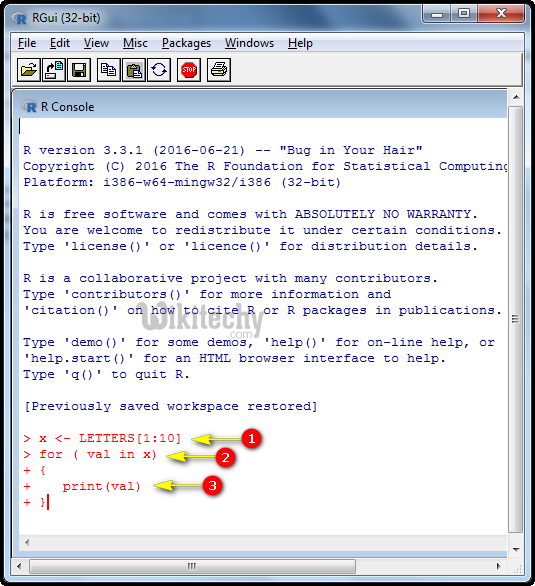

I've ran the code before, and it runs, but doesn't make the individual files. So I want an output of 15 files names immunes.0, immunes.1, immunes.2 etc. I then want it to store the result of the function in immunes.i, where I want I to be the same integer (1,2,3) set.This simple for loop I want it to run the function FindMarkers, which will take as an argument a data identifier (1,2,3 etc.) that it will use to pull data from. It took a little more code to do it but the process is very clear since it is explicitly written out. The result is identical to my replicate() code above. To match what I did with replicate() I do three iterations of the loop ( i in 1:3), drawing 5 values via rnorm() each time. I initialize this as an empty list prior to starting the loop. In my example I’ll save the output of each iteration of the loop into a list called list1. I think it’s because for() loops are more explicit on the looping process: the user can see that i is looped over and the output for each i iteration is saved into the output object because the code is written out explicitly. However, in my experience some folks find for() loops intuitive when they are starting out in R. With time and practice I’ve found replicate() to be much more convenient in terms of writing the code.

Replicate(n = 3, rnorm(5, 0, 1) ) # Ī for() loop can be used in place of replicate() for simulations. I focus on list output throughout the rest of this post only because that’s what I have been using recently for simulations. This can be a useful output type for simulations. In this case there will be three columns in the output, one for each run, and 5 rows. Each column in the matrix is the output from one run of the function. Note if I don’t use simplify = FALSE I will get a matrix of values instead of a list. Replicate(n = 3, rnorm(5, 0, 1), simplify = FALSE ) # ] Each vector is from a unique run of the function, so contains five random numbers drawn from the normal distribution with a mean of 0 and standard deviation of 1. The output below is a list of three vectors. Notice I use simplify = FALSE to get a list as output. Here I’ll ask for three runs of 5 values each. It allows me to run the function I put in expr exactly n times. How do I simulate 5 values from this same distribution multiple times? This is where replicate() comes in. Using rnorm() directly gives me a single set of simulated values. Since I’m going generate random numbers I’ll set the seed so anyone following along at home will see the same values. Below I’ll simulate five values from a normal distribution with a mean of 0 and a standard deviation of 1 (which are the defaults for mean and sd arguments, respectively). Let’s say I wanted to simulate some values from a normal distribution, which I can do using the rnorm() function. Use simplify = FALSE to get vectors saved into a list instead of in an array. simplify, which controls the type of output the results of expr are saved into.expr, the expression that should be run repeatedly.This is where I set the number of simulations I want to run. n, which is the number of replications to perform.The replicate() function takes three arguments: Using replicate() is an alternative to building a for() loop to repeatedly simulate new values.


While I don’t actually know the apply family of functions very well, I use replicate() a lot (although also see purrr::rerun()). Those are primary parts of the simulations I do. Notice the documentation mentions repeated evaluations and that the use of replicate() involves random number generation. Replicate is a wrapper for the common use of sapply for repeated evaluation of an expression (which will usually involve random number generation). The replicate() function is a member of the apply family of functions in base R.


 0 kommentar(er)
0 kommentar(er)
